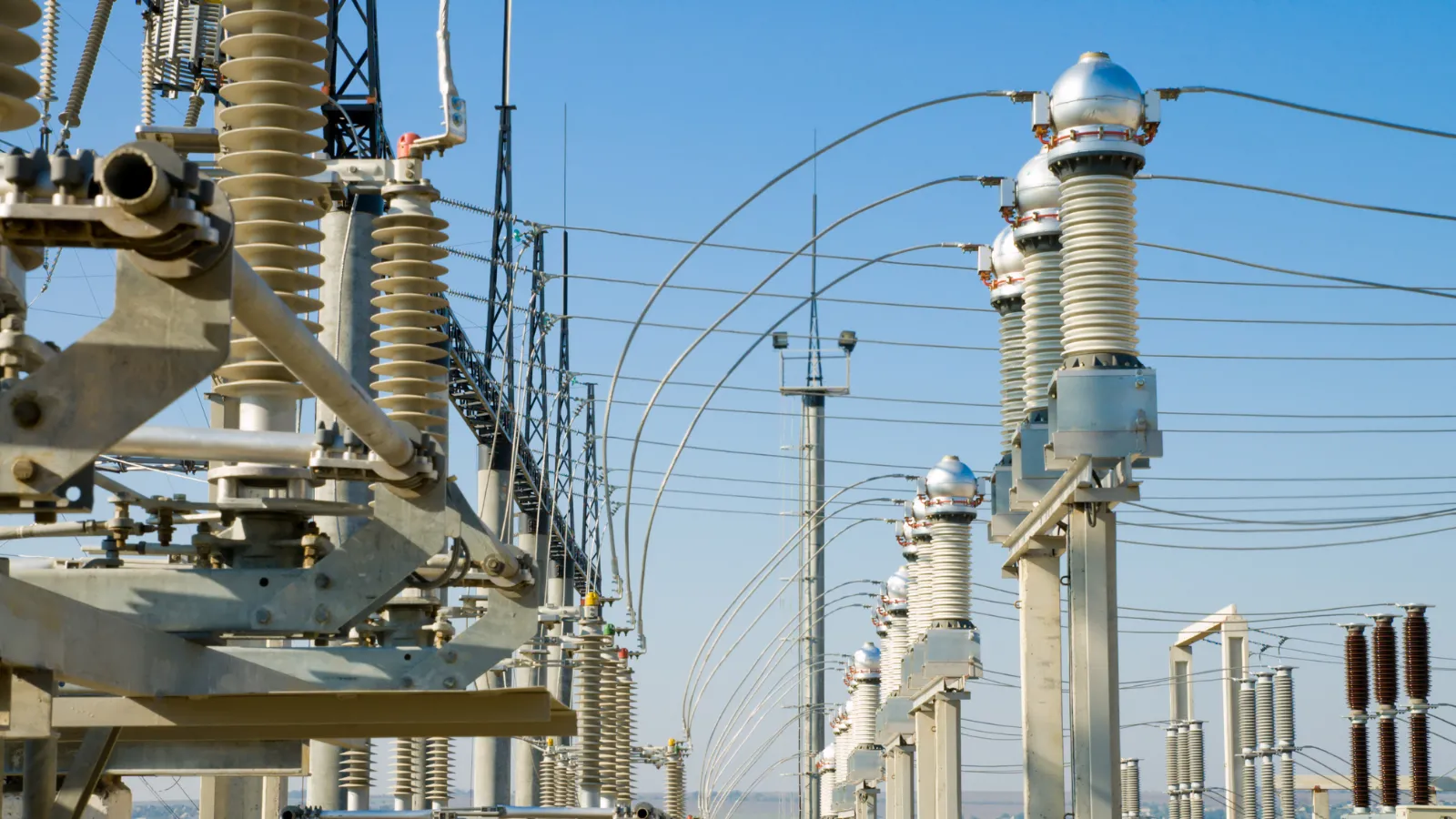
One of the electrical hazards that must be taken into consideration to ensure safe working conditions for Redeia's technical equipment is arcing. These are usually generated by a short circuit and can happen anywhere electrical equipment is connected. An electric arc is, in short, a continuous electric discharge of high current flowing through an air gap between conductors. To prevent such discharges, electrical insulators are used: materials capable of preventing or slowing the flow of electric current.
One of the most widely used materials to avoid arcing is SF6 gas, a strongly electronegative gas with a very effective resistance with favorable properties to absorb electrons. This gas is present in a multitude of high voltage components and keeping it in optimal conditions is key for the correct operation of the network, considering that time and the presence of humidity or other contaminants, can degrade SF6 and decompose into other by-products with worse electrical insulation properties.
One of the main challenges electrical equipment insulated by SF6 maintenance is the detection of these by-products, and thus avoid the incorrect operation of such electrical equipment. In order to find innovative and efficient solutions to continuously monitor SF6 gas by-products, Elewit launched the challenge "continuous monitoring systems for SF6 pollutant by-products in high voltage equipment of the electricity transmission network". The objective was to find a solution that would not only detect insulation anomalies, but also provide information with which to characterize as accurately as possible the cause of the anomaly in a reliable and selective manner.
The winning solution was proposed by Universidad Politécnica de Valencia and was focused on the development of a TeraHertz (THz) based sensor to detect the presence of SO2 in SF6 filled Gas Insulated Switchgear (GIS). This is important, because SO2 is a decomposition by-product of SF6, so its identification and measurement eases gas quality monitoring. In summary, the sensor would identify the presence of SO2 and quantify its concentration in the high voltage compartment insulated with SF6. To test the proposal, a proof of concept was carried out with three main objectives:
- Quantifying the efficiency of THz spectroscopy to detect the presence of SO2 and define its threshold.
- Studying the effect of SF6 presence on SO2 detection.
- Analyzing the detection threshold of SO2 in a SF6 gas contaminated with a defined concentration of SO2.
Upon completion of the project, the report concluded that it is possible to measure SO2 concentration from outside the chamber using continuous wave THz spectroscopy.
One of the electrical hazards that must be taken into consideration to ensure safe working conditions for Redeia's technical equipment is arcing. These are usually generated by a short circuit and can happen anywhere electrical equipment is connected. An electric arc is, in short, a continuous electric discharge of high current flowing through an air gap between conductors. To prevent such discharges, electrical insulators are used: materials capable of preventing or slowing the flow of electric current.
One of the most widely used materials to avoid arcing is SF6 gas, a strongly electronegative gas with a very effective resistance with favorable properties to absorb electrons. This gas is present in a multitude of high voltage components and keeping it in optimal conditions is key for the correct operation of the network, considering that time and the presence of humidity or other contaminants, can degrade SF6 and decompose into other by-products with worse electrical insulation properties.
One of the main challenges electrical equipment insulated by SF6 maintenance is the detection of these by-products, and thus avoid the incorrect operation of such electrical equipment. In order to find innovative and efficient solutions to continuously monitor SF6 gas by-products, Elewit launched the challenge "continuous monitoring systems for SF6 pollutant by-products in high voltage equipment of the electricity transmission network". The objective was to find a solution that would not only detect insulation anomalies, but also provide information with which to characterize as accurately as possible the cause of the anomaly in a reliable and selective manner.
The winning solution was proposed by Universidad Politécnica de Valencia and was focused on the development of a TeraHertz (THz) based sensor to detect the presence of SO2 in SF6 filled Gas Insulated Switchgear (GIS). This is important, because SO2 is a decomposition by-product of SF6, so its identification and measurement eases gas quality monitoring. In summary, the sensor would identify the presence of SO2 and quantify its concentration in the high voltage compartment insulated with SF6. To test the proposal, a proof of concept was carried out with three main objectives:
- Quantifying the efficiency of THz spectroscopy to detect the presence of SO2 and define its threshold.
- Studying the effect of SF6 presence on SO2 detection.
- Analyzing the detection threshold of SO2 in a SF6 gas contaminated with a defined concentration of SO2.
Upon completion of the project, the report concluded that it is possible to measure SO2 concentration from outside the chamber using continuous wave THz spectroscopy.